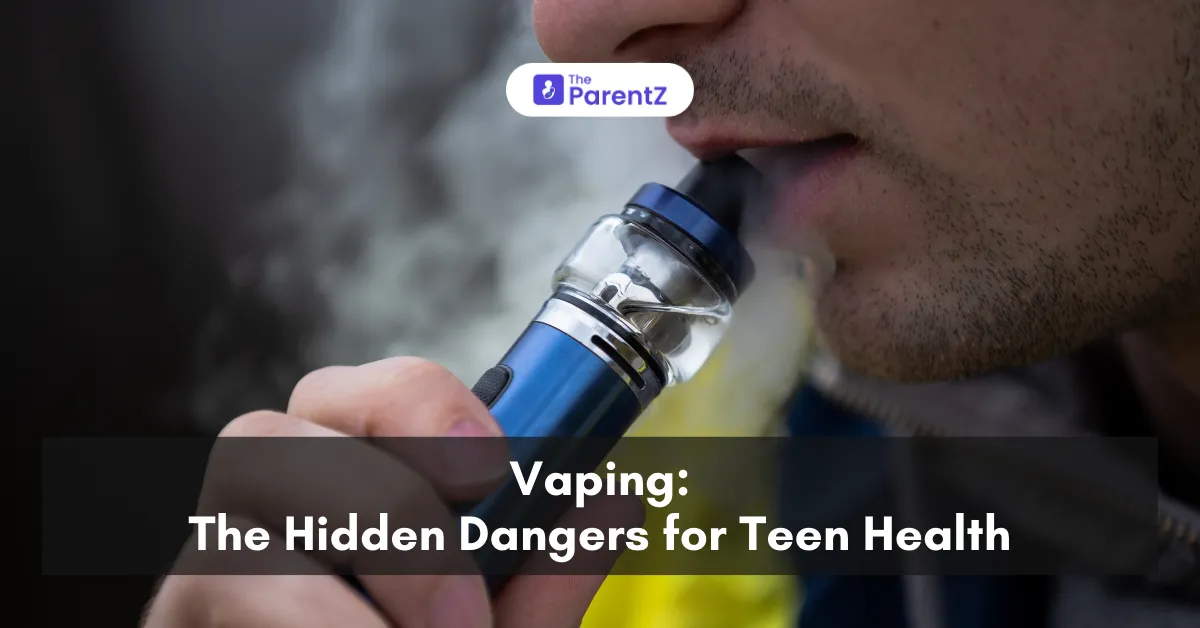Vaping has become increasingly popular among teenagers, often marketed as a safer alternative to smoking. With sleek designs, appealing flavors, and easy accessibility, e-cigarettes seem harmless. However, beneath the surface lies a range of health risks that can have long-term consequences for young users.
Many teens and parents are unaware of the dangers associated with vaping, from nicotine addiction to lung damage.
1. Nicotine Addiction: The Trap for Teens
Most e-cigarettes contain nicotine, a highly addictive substance that affects brain development. Since the teenage brain is still growing, nicotine exposure can:
• Interfere with memory, attention, and learning.
• Increase the risk of mood disorders like anxiety and depression.
• Make teens more susceptible to addiction later in life.
Some e-cigarettes contain as much nicotine as 20 cigarettes, making them even more addictive than traditional tobacco products.
2. Lung Damage and Respiratory Issues
Many vaping liquids contain harmful chemicals that can cause serious lung diseases. Vaping has been linked to:
• Popcorn Lung (Bronchiolitis Obliterans): A condition where the small airways in the lungs become inflamed and scarred, leading to breathing difficulties.
• EVALI (E-cigarette or Vaping Product Use-Associated Lung Injury): A severe lung illness caused by vaping, which can lead to hospitalization or even death.
• Chronic Cough and Wheezing: Vaping irritates the airways, leading to persistent respiratory problems.
3. Dangerous Chemicals in Vape Liquids
E-cigarettes do not just contain water vapor. Many vaping products include harmful substances like:
• Diacetyl: A chemical linked to severe lung disease.
• Formaldehyde: A toxic substance also found in car exhaust.
• Heavy Metals: Including lead and nickel, which can cause long-term organ damage.
Even vape liquids labeled “nicotine-free” may contain hidden toxins that harm the lungs and brain.
4. The Mental Health Connection
Vaping is not just a physical health risk—it can also negatively affect mental well-being. Studies show that teen vapers are more likely to experience:
• Increased stress, anxiety, and depression due to nicotine’s effect on brain chemistry.
• A higher likelihood of substance abuse in the future.
• Social pressure and dependence, leading to compulsive use.
5. The Myth of “Safe” Flavors
Many teens start vaping because of the sweet, fruity flavors available. However, these flavors are not harmless—they contain chemicals that can damage the lungs. Additionally, flavored vapes make it easier for young users to develop a habit without realizing the risks.
In many countries, flavored e-cigarettes have been banned to prevent teen addiction, but they remain widely available through online and illegal markets.
6. How Parents Can Help Prevent Teen Vaping
Teens are often influenced by their friends, social media, and misleading marketing. Parents can take steps to educate and protect their children:
• Start the conversation early – Talk openly about the risks of vaping.
• Lead by example – Avoid using e-cigarettes or smoking around children.
• Set clear expectations – Let them know that vaping is not acceptable.
• Monitor their environment – Be aware of peer influences and online trends.
• Encourage healthy coping mechanisms – Promote sports, hobbies, and other stress-relieving activities.
If your teen is already vaping, approach the situation with support rather than punishment. Helping them quit requires understanding and guidance.
Final Thoughts
Vaping may seem harmless, but its dangers are real—especially for teenagers. The chemicals in e-cigarettes can cause long-term health problems, and nicotine addiction can impact brain development and mental health. Raising awareness and educating teens about these risks is crucial in preventing the next generation from falling into the vaping trap.
Encouraging a healthy, smoke-free lifestyle is the best way to protect teen health for the future.








Be the first one to comment on this story.